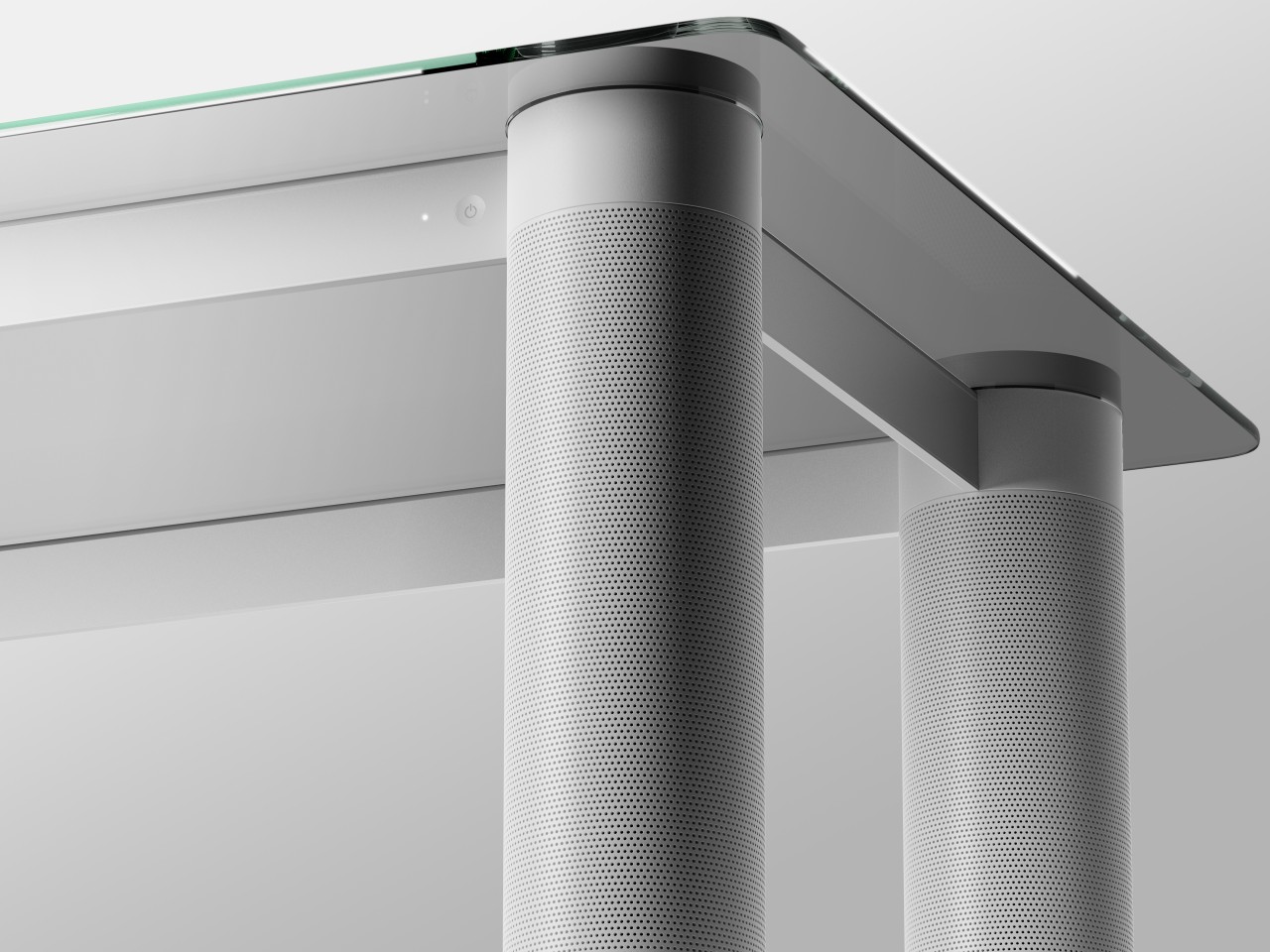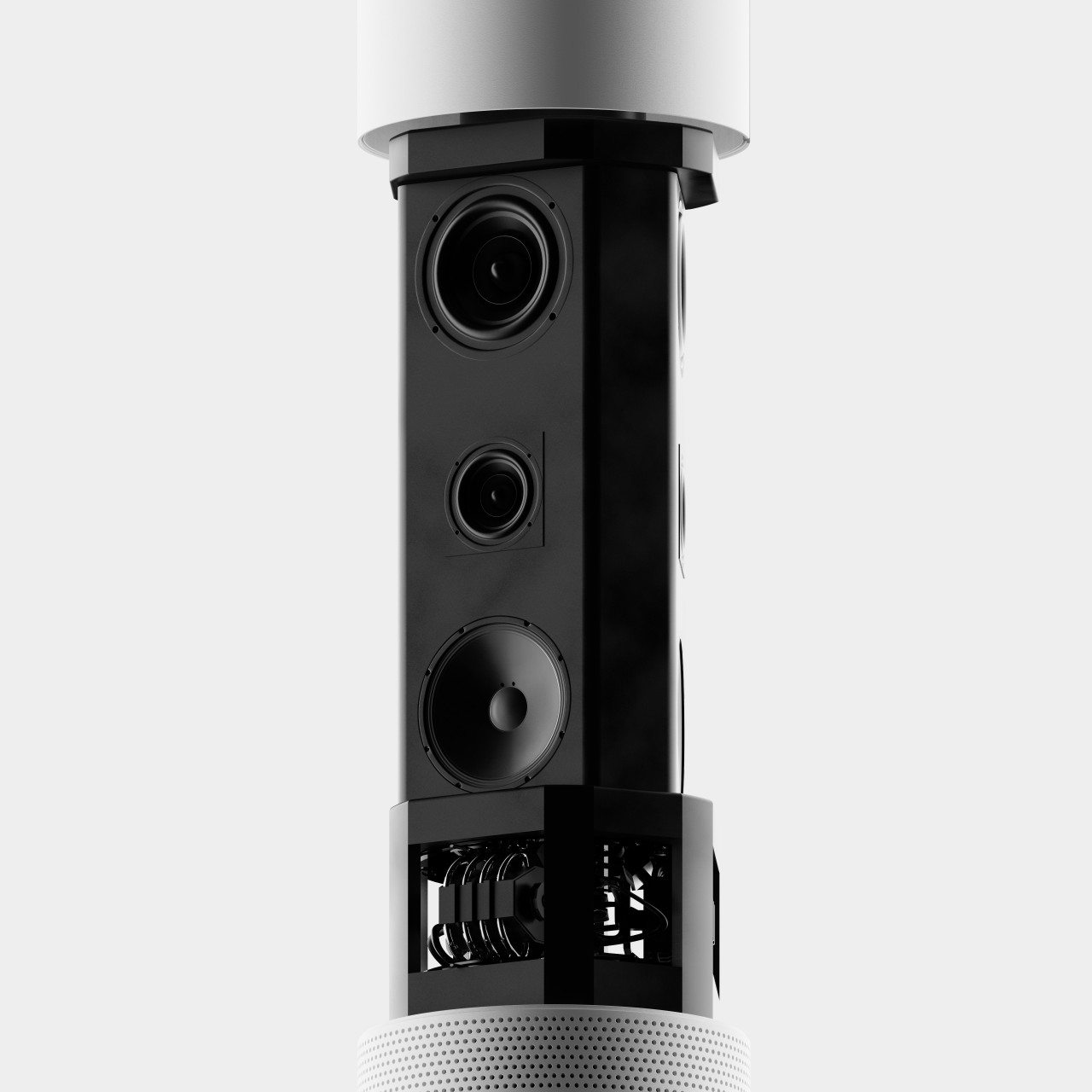#Four speakers masquerade as table legs for a tidier living room

Sound is finally getting the attention it rightfully deserves. Even the most stunning visuals wouldn’t be immersive without matching good audio unless you’re viewing a photo or an animated GIF. That’s why speakers are now a more common sight in homes, including those that are separate but connected to TVs. Unfortunately, that also means they can become an eyesore, especially if you have multiple units spread around, either near the TV or even on tables and shelves. There are speaker designs that try to hide their presence, and this particular concept does so ingeniously by making the speakers, which usually take on a cylindrical form, function as legs for a minimalist yet stylish glass table.
Designers: Jiung Yun, Eunbyeol Yun, Jisu Lee, Seonjin Baek


Smart home speakers try to dress up as decorations or art objects, but they are still very visible and take up space on tables and shelves. That’s not even considering the more numerous soundbars and TV speakers that are situated near the screen. They might not block your view, but they can still be a distraction by their mere presence, breaking what should have been an immersive experience.



verre is a concept for a living room table that addresses that design problem in a rather creative and unusual way. Many wireless speakers these days are simply variations on a cylindrical shape, so why not use them for something that’s innately cylindrical? That’s why all four legs of this glass table are actually speakers, though you will definitely not know it at first glance.


The speakers have a powder-coated finish that’s not unusual for tables that combine a glass surface with a metal frame. And while the speaker grilles do catch your attention, they’re not exactly alien to a design that has a teeny bit of an industrial design vibe to it. What’s really impressive is that you won’t see any of the controls for the speakers at all, save for the power button hidden on one of the frames. Physical controls for the speaker are embedded in the fabric-covered discs that sit on top of each “leg,” perfectly blending into their surroundings.



While this LG-inspired speaker concept is visually interesting, it does have some practical considerations that need to be addressed. For one, having the speakers be that low could actually affect the very immersion that they’re supposed to enhance since not all sounds come from the bottom. Additionally, speakers will naturally generate some amount of vibration, so having a glass tabletop might not exactly be the smartest choice for this design.



JC Torres
If you liked the article, do not forget to share it with your friends. Follow us on Google News too, click on the star and choose us from your favorites.
If you want to read more like this article, you can visit our Technology category.




